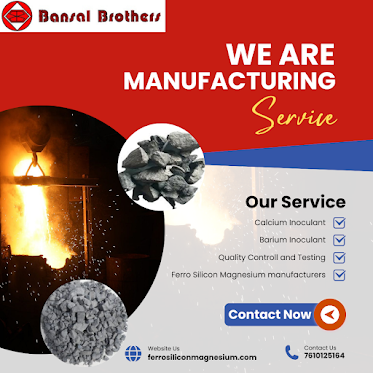The Science Behind Calcium Inoculant in Casting
The science behind calcium inoculant in casting is a captivating interplay of materials science and metallurgy, playing a critical role in the quality and performance of cast iron products. At its core, calcium inoculant is used to refine and modify the graphite structure within cast iron, which directly impacts its mechanical properties and overall quality. In the casting process, molten iron is poured into molds to create various components, and the introduction of calcium as an inoculant serves to enhance the characteristics of the final product. Calcium, often incorporated in the form of calcium silicide or calcium carbide, reacts with the molten iron to promote the formation of desirable graphite structures, such as nodular or spheroidal graphite, which substantially enhances the material's ductility and tensile strength.
Calcium inoculation is especially critical in the production of ductile iron, where the objective is to produce a cast iron with superior mechanical properties compared to conventional gray iron. The presence of calcium in the alloy serves to control the formation of graphite particles or nodules, thus enhancing the material's ability to withstand stress and attrition. This process not only effects the strength and durability of the iron but also its machinability and surface texture. By meticulously regulating the quantity and timing of calcium addition, foundries can accomplish specific mechanical properties tailored to the requirements of different applications.
In practice, the addition of calcium to molten iron influences the formation of graphite by fostering the formation of stable graphite nodules and inhibiting the growth of undesirable graphite structures. This is achieved through a series of complex chemical reactions that occur during the solidification of the molten iron. Calcium reacts with sulfur and oxygen in the molten iron to produce calcium sulfide and calcium oxide, which are less likely to interfere with the formation of graphite. As a result, the graphite in the cast iron solidifies in a more uniform and controlled manner, resulting to enhanced material properties.
The effectiveness of calcium inoculants can be influenced by various factors, including the composition of the molten iron, the temperature of the liquid, and the specific type of calcium compound used. For instance, calcium silicide is known for its high reactivity and ability to enhance the mechanical properties of cast iron significantly. On the other hand, calcium carbide is used for its ability to introduce calcium into the liquid more progressively, which can be beneficial for certain casting processes. The choice of calcium inoculant and its manner of introduction into the molten iron are therefore crucial considerations for attaining the desired outcomes.
Beyond the technical aspects of calcium inoculation, the implementation of these principles has extensive implications for various industries that rely on cast iron components. For example, in the automotive industry, the enhanced properties of ductile iron make it suitable for producing critical components such as engine blocks and suspension parts, where strength and durability are paramount. Similarly, in the construction industry, cast iron with optimal mechanical properties ensures the reliability and longevity of structural components and infrastructure.
To remain at the forefront of these advancements in casting technology, Ferro Silicon Magnesium is committed to providing high-quality calcium inoculants and other metallurgical products that meet the evolving requirements of the industry. Our expertise in this field is reflected in our exhaustive range of products and services designed to support the production of superior cast iron components. For more information about our offerings and to investigate how we can assist with your specific casting requirements, please visit our website at www.ferrosiliconmagnesium.com.
In conclusion, the science behind calcium inoculant in casting represents a critical component of modern metallurgy, with significant implications for the quality and performance of cast iron products. Through meticulous control of the inoculation process, foundries can enhance the mechanical properties of cast iron, leading to enhanced performance and reliability in a wide range of applications. As the industry continues to evolve, the function of calcium inoculants remains a vital area of focus, spurring innovations and advancements in casting technology.



Comments
Post a Comment